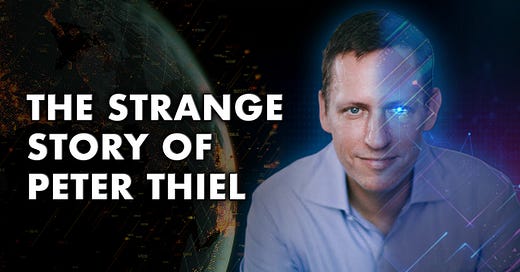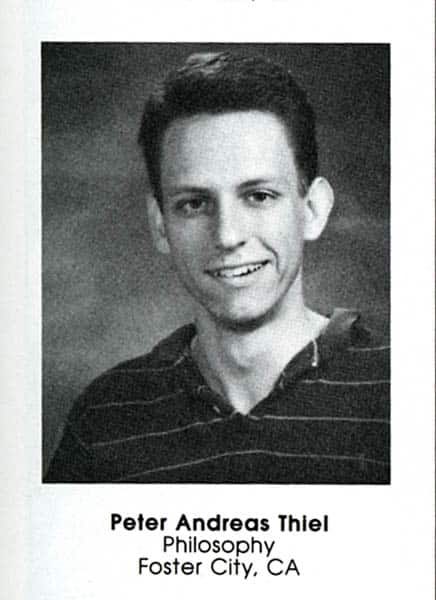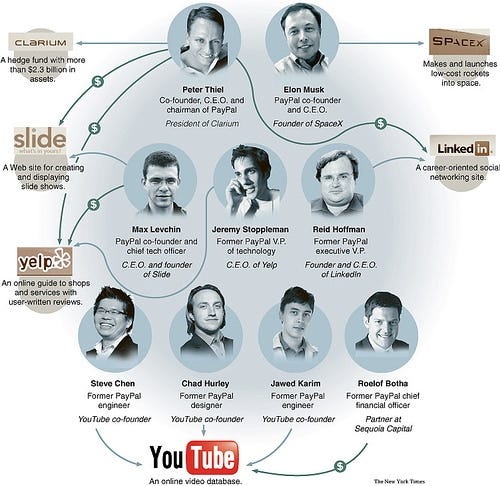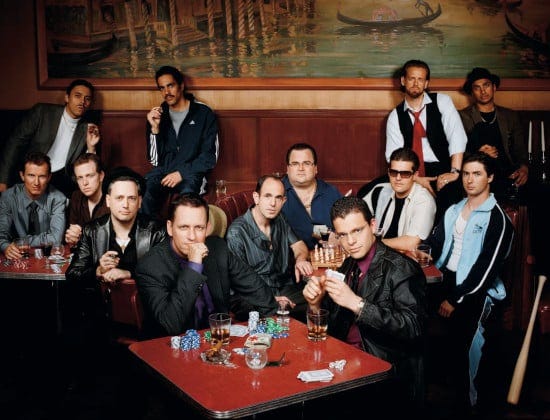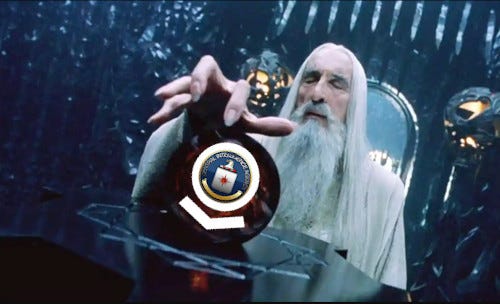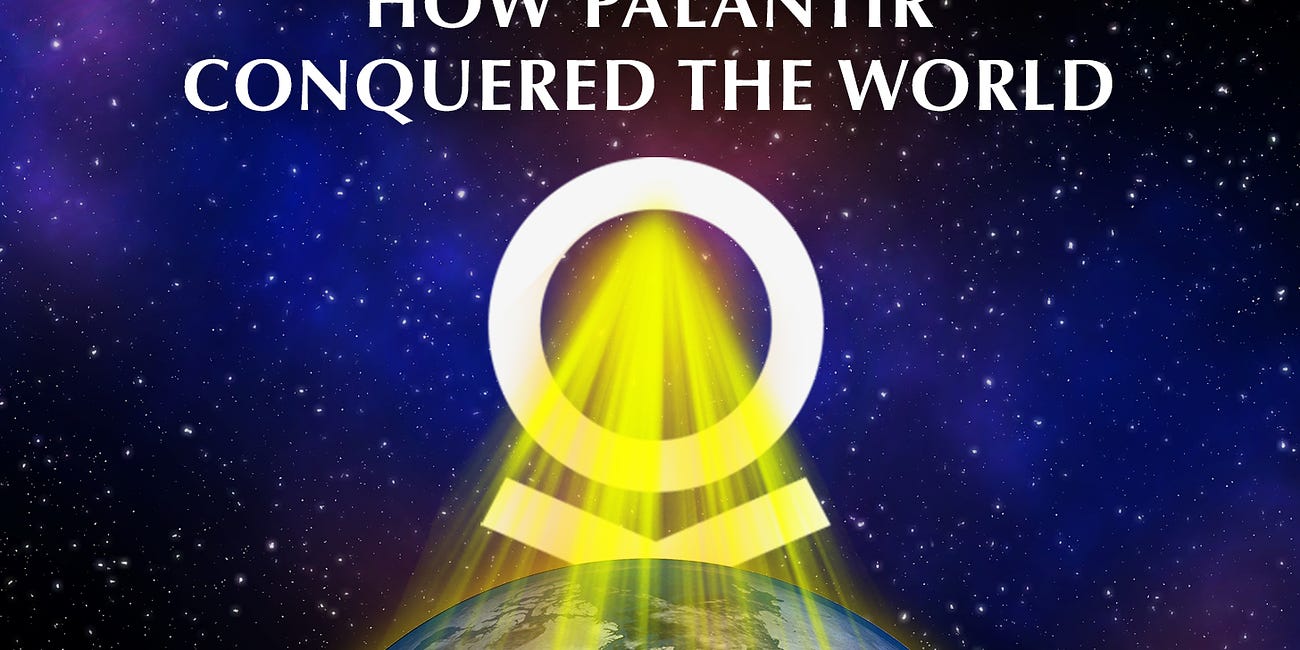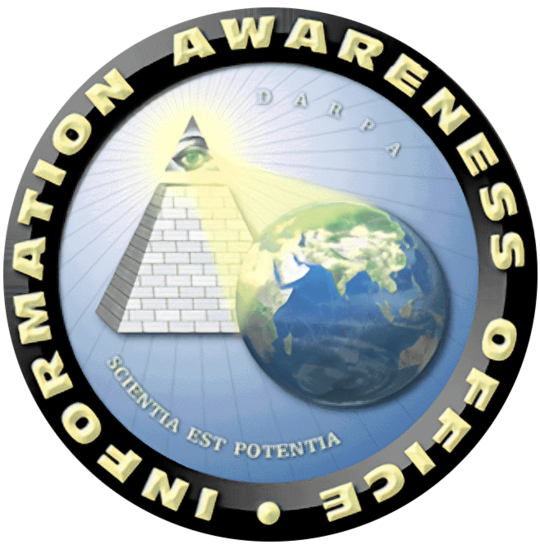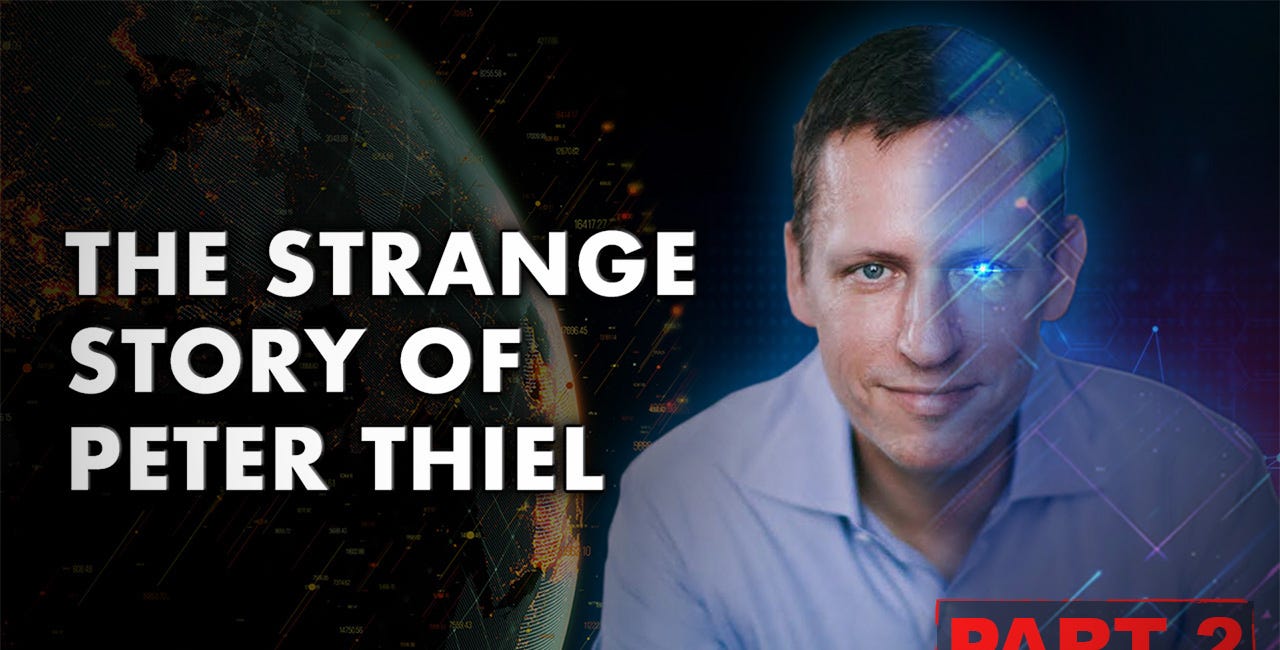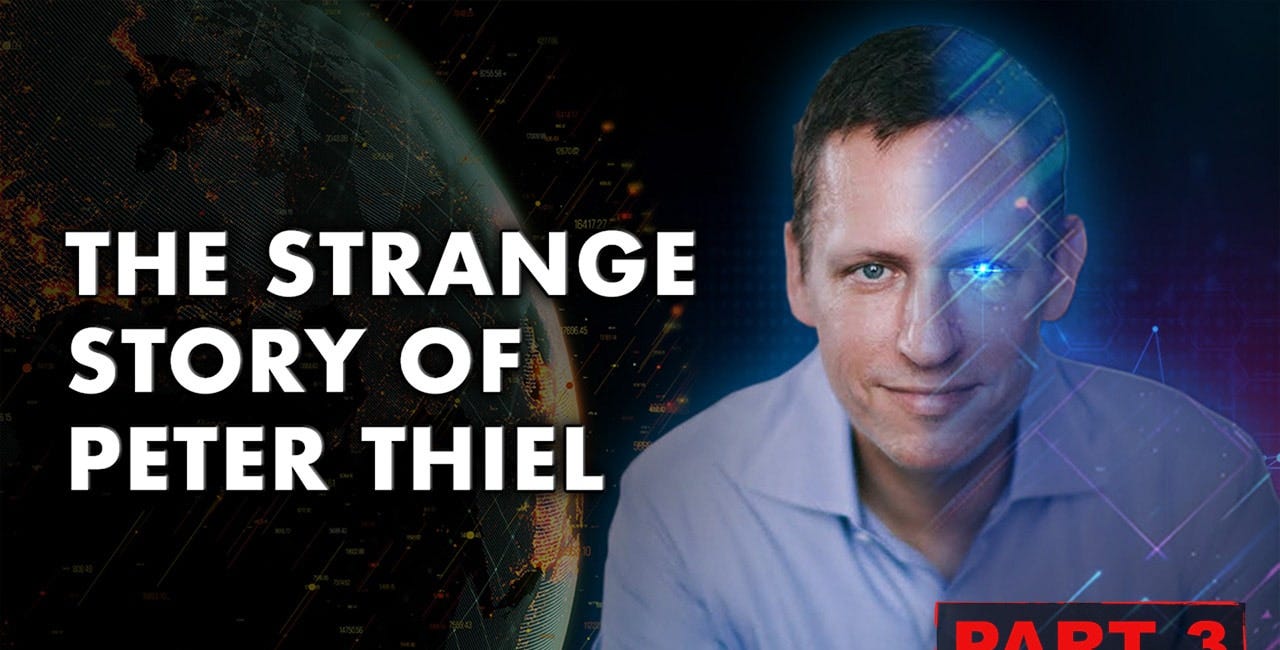by James Corbett
corbettreport.com
October 20, 2024
What do you call someone who identifies as a "vegetarian" but who consistently chows down on veal, mutton and ribeye steaks? Whatever you call that person, it's not "vegetarian."
And what do you call someone who identifies as a "libertarian" but who has spent his entire career actively collaborating with governments, militaries and intelligence agencies in an effort to enrich himself and to grow the power of the state? Again, whatever you call that person, it's not "libertarian."
Why, then, does every mainstream biography of Peter Thiel bend over backwards to stress his "radical libertarian ideology" and baselessly insist that Thiel is part of a gang of Silicon Valley renegades who are seeking to overturn the state?
In reality, Thiel couldn't be further from the "radical libertarian" that he has claimed to be or from the anti-government crusader the establishment media outlets insist he is. Indeed, after spending decades equipping the intelligence apparatus and the military forces of America, Israel and their allies with the most high-tech surveillance and targeting systems known to man, Thiel is now on the verge—thanks to his bought-and-paid-for lackey, J. D. Vance—of taking over the White House.
The truth, of course, is that Thiel is not a libertarian at all. He's not even the uptight Silicon Valley nerd who features in the occasional Wall Street Journal interview or New Yorker profile or Joe Rogan podcast. Instead, Thiel—like Bill Gates—is an increasingly important wheeler-dealer in the global oligarchy, a hub from whom one can trace many spokes of the globalist agenda and discern the contours of the coming technocratic prison state.
This is The Strange Story of Peter Thiel.
The Early Years
Peter Thiel was born in Frankfurt, Germany, in 1967 but lived there only briefly. In fact, given the propensity of his mining engineer father, Klaus Friedrich Thiel, to be transferred to far-flung corners of the globe for his work, young Peter didn't have a chance to stay anywhere very long throughout his childhood.
First, Klaus moved his family to Cleveland, Ohio, in 1968 so he could earn a master's degree in engineering at Case Western Reserve University. Six years later, he uprooted the family again to take up work at a uranium mine in South West Africa (now Namibia), where he helped apartheid South Africa build a clandestine nuclear weapons program. When the mine opened and the African labourers whom Thiel père oversaw (and who had not been told they were building a uranium mine) started dying of radiation poisoning, Klaus was on the move yet again, first heading back to Cleveland and then to California, where the Thiels finally settled in Foster City, a sleepy suburb of San Mateo that is these days considered an adjunct of Silicon Valley.
Thiel was by all accounts an aloof, haughty, arrogant child. He was a Dungeons & Dragons enthusiast, a Lord of the Rings obsessive and a chess wunderkind who displayed no sense of humour, never smiled, had no close friends and was, perhaps unsurprisingly, relentlessly bullied and teased by classmates. He was, however, possessed of a sense of his own greatness—he signed his classmates’ school yearbooks with the encouraging taunt, "Maybe you'll come within one point of me next year"—and demonstrated early on that he was willing to break whatever rules need to be broken in the pursuit of money, even if it meant putting his own future in jeopardy. One of his high school classmates asserts that, after securing a spot at Stanford University, Thiel offered to take younger students' SAT tests for them at a cost of $500 per test provided they could find a way to "arrange untraceable payments," a scheme that could have cost Thiel his own spot at Stanford were it discovered.
Entering Stanford in the fall of 1985, Thiel continued his high school patterns. When he received a 4.0 GPA in his first term, he made a beeline for the only other 4.0 student he knew and proceeded to argue with him for ten minutes about why his own 4.0 was "better" than his classmate’s 4.0 because Thiel had received more A+ grades. In his second semester, Thiel once swore while quoting a classmate. To commemorate the occasion, his roommate printed up a sign declaring "Under this spot, Peter Thiel first said the word fuck" and affixed the sign to the ceiling. It stayed there until the end of the semester, eliciting much laughter from the rest of his dormmates until it was finally pointed out to him, whereupon he tore it down without a word.
Whatever it did or didn't do for his social standing, Stanford at least afforded Thiel access to a network of people who would prove important in his future career. Most of them ended up working for his first entrepreneurial venture, The Stanford Review, a monthly, tabloid-style newspaper he co-founded with Norman Book in 1987. The Review was intended to provide a conservative counterpoint to the liberal Stanford Daily, the student-run broadsheet that had existed since the university's founding in 1892.
Intriguingly, although the Daily's complete archives have long since been digitized, issues of the Review published prior to 1999 can be read only in a special section of the Stanford library and only after a request access has been made and an agreement signed stipulating that the would-be reader won't make copies of any of the material. Even so, according to Max Chafkin, Thiel's biographer, there are certain issues of the Thiel-era Review missing from the collection and campus rumour has it that "the missing editions had been deliberately removed from the archives to protect Thiel's reputation."
Given the material still accessible in the existing archive, one has to wonder how bad the missing issues could be. Still available for perusal at the library, for instance, is "The Rape Issue," in which Thiel associate David Sacks—who would go on to become COO of PayPal and a key alumni of the so-called "PayPal Mafia"—wrote an impassioned defense of Stuart Thomas, a Stanford senior whose graduation had been put in doubt after he pled no contest to the statutory rape of a freshman student. In the pages of Thiel's Review, Sacks argued that statutory rape was a "moral directive left on the books by pre-sexual revolution crustaceans" and that Thomas' actions weren't that reprehensible because his victim "still had the physical coordination to perform oral sex" and "presumably could have uttered the word 'no.'" The issue also included a convenient guide to help students avoid falling afoul of any would-be feminist accusers by avoiding Stanford women altogether, as they were "ugly" anyway.
The Review also devoted much of its coverage to lecturing gay men about the immorality of their lifestyle. Perhaps one would expect this from a conservative student tabloid in the 1980s, except for the fact that many of the Review's editors and writers (including, of course, Thiel himself) were gay. In one particularly memorable incident, Keith Rabois—a Review columnist two years Thiel's junior—protested Stanford's decision to throw a student out of the Otero House dorm for using a homophobic slur against a gay student. His "protest" consisted of standing outside the home of Otero's resident fellow, Dennis Matthies, and screaming at the top of his lungs: "Faggot! You are going to die of AIDS. You're going to get what's coming to you." That Matthies was, as far as anyone knew, not gay didn't seem to bother Rabois (or his defenders at the Review) any more than the fact that, like Thiel, Rabois is himself homosexual.
Birth of a Mafia Don
Whatever one makes of the Review and its journalistic lowlights, it did have the effect of supplying Thiel with a number of connections for his next entrepreneurial venture: PayPal. After a tour through Stanford Law School, a short clerkship at the Eleventh Circuit appeals court in Atlanta and an unsuccessful seven-month-and-three-day stint as an associate at New York corporate law firm Sullivan & Cromwell—yes, that Sullivan & Cromwell—Thiel decided that a legal career wasn't for him. He moved back to Silicon Valley with the intention of starting a hedge fund.
Being an ambitious young nerd looking to make money by any means possible, it wasn't long before Thiel stumbled into his first fortune. His break came in a chance meeting with Max Levchin, a 23-year-old computer programmer with an off-the-wall (and ultimately meaningless) idea for coding encryption software for the PalmPilot, the trendy tech device of the day that was never adopted by more than a handful of corporate executives. Still, Thiel admired Levchin's ambition and agreed to invest $250,000 to help the young coder develop his idea. That idea snowballed into a plan to use PalmPilots for sending digital IOUs from device to device and, eventually, into a company called Confinity, which—according to Thiel's post-success PR—aimed at "the erosion of the nation-state" through the creation of a self-contained, unregulatable digital currency.
If you've read any of the mainstream histories of Thiel, you know where this story is going. Confinity spun off a money transfer service called "PayPal" that merged with X.com, the "online financial services company" that just happened to be the brainchild of a certain other aspiring young technocrat who would go on to become a key part of the erection of the coming global digital panopticon.
As I say, you're likely familiar with this story because establishment tech journalists love telling it. In fact, in the race to tell the PayPal saga in the most over-the-top and Hollywoodesque way possible, Fortune writer Jeffrey M. O'Brien hit the jackpot in 2007 with his melodramatic name for the collection of psychopaths, technocrats and misfits who made their fortunes at Thiel's first major company: "The PayPal Mafia."
The epithet is deliberately designed to conjure up the mystique of the mob. The various tech nerds in Thiel's orbit delighted in posing for the iconic cover photo that depicts them as members of a shadowy digital crime family. And, naturally, Thiel is featured as the Don Corleone at the center of the picture, notably better dressed than his band of lieutenants and clearly presiding over the gathering.
The picture, with everything it implies is, of course, laughable. That this collection of pasty computer geeks could even plausibly come across as fearsome and intimidating is a testament to the ability of wardrobe, lighting and positioning to paint a very deceptive picture. Nonetheless, the image (and the name) stuck, and to this day Fortune (and others) persist in referring to this incredibly wealthy and influential assembly of Silicon Valley oddballs as "The PayPal Mafia," informing us as recently as this past July that "The PayPal Mafia still rules Silicon Valley."
Thiel biographer Max Chafkin, however, has come up with an even more fitting moniker for this group: the "Thielverse." The name appropriately reflects the fact that the operative part of these characters' biographies is not that they all worked at PayPal at some point but that they were (for the most part) hand-picked and cultivated by Thiel, who used his connections with them to further expand the scope and influence of his subsequent ventures.
The residents of this Thielverse include:
the aforementioned Max Levchin, who would go on to make his fortune investing and directing such companies as Yelp and who in 2013 made an impassioned defense of the NSA and its activities (even if what it is doing "may be evil");
the aforementioned David Sacks, who has managed to maintain membership in both the Thielverse and Elon Musk's rival technocratic nerd billionaire group, the "shadow crew," all while running a multi-billion-dollar venture capital firm and using his money to buy political clout and dodge questions about his rape-apologizing past;
the aforementioned Keith Rabois, who, after engaging in the infamous "faggot" protest at Otero House, became an executive vice president at PayPal before going on to work at LinkedIn for fellow Thielverse associate Reid Hoffman and making a fortune investing in YouTube, Lyft, Airbnb and other Thielverse-adjacent startups;
the above-named Reid Hoffman (the rotund gentleman with one too many buttons unbuttoned in the middle background of the infamous mafia photo), who first introduced Thiel to Mark Zuckerberg, founded LinkedIn, made a fortune investing in companies like Airbnb, sat on the advisory council of the MIT Media Lab and, not coincidentally, spent time on Jeffrey Epstein's private island;
and a host of other affluent and influential Silicon Valley techies, investors and startup founders.
The tale of PayPal is, by now, a well-told one, but from the perspective of Thiel's biography, it's almost incidental to the story.
To be sure, Thiel's PayPal experience—from his presence at PayPal's birth in 1999 to his stint as CEO after the summary termination of Elon Musk to his oversight of the sale of the company to eBay in 2003—did make him fabulously rich. Through a highly unusual investment trick, Thiel has managed to parlay his initial $1,700 PayPal stock purchase into a tax-free $5 billion retirement fund.
And Thiel's PayPal experience did help him to create the network of powerful contacts that have helped him to populate the Thielverse and further leverage his own wealth and power.
But (SPOILER ALERT!) PayPal did not effect the "erosion of the nation-state" as (we are told) the young Thiel had mused. On the contrary, Thiel would take one of PayPal's most innovative software developments and spin out his next major venture by actively weaponizing that technology for the benefit of the deep state.
From Palantir to the Heart of the Deep State
When Thiel and his Thielverse minions were "blitzscaling" PayPal to increase their numbers on Thiel's "World Domination Index" (yes, that's what he called it), they ran into a pesky problem: fraud.
As Thiel biographer Chafkin explains in The Contrarian: Peter Thiel and Silicon Valley's Pursuit of Power:
Criminals had begun to notice that the company's growth hacks—one of which was its decision not to verify users' identities when they opened an account—had made it an ideal place to launder money stolen from victims of identity theft. They would get their hands on a batch of stolen credit card numbers, then use a software bot to open PayPal accounts for each one. The shell accounts would attempt to make payments to other PayPal accounts, also controlled by the fraudsters. Of course, charges would sometimes be declined by the providers of the stolen credit cards, if for instance a theft had already been reported, but often the charges would go through before the victim realized what had happened. When the victim did realize, they'd call their bank, which would then demand repayment. PayPal, as the merchant of record, was on the hook for the damages.
As a result of this lax approach to security, PayPal was bleeding tens of millions of dollars in chargebacks. The solution to this problem came from John Kothanek, the company's lead security investigator who, in the long tradition of Silicon Valley's military/intelligence roots, was a "former" military intelligence officer. After creating a visual map of the flow of these fraudulent funds, he found that over $15 million in separate fraudulent transaction all led back to a single user in Russia who went by the handle "Igor." Kothanek and his team developed software that would flag such suspicious transactions and provide the details in a handy visual format for PayPal's fraud inspectors. They named their program "Igor" after the fraudster who had inspired its creation.
It wasn't long before Uncle Sam took note of the work of "former" military intelligence employee Kothanek. Of course, PayPal—the company that Thiel had sworn would lead to the "erosion of the nation-state"—was only too happy to share this software with the spook world. Soon after Igor's deployment, the FBI came knocking and PayPal obligingly gave the Bureau the software to start tracking down money launderers.
As soon as the eBay payout money arrived, Thiel abandoned PayPal—and his supposed dream of creating an unregulated digital currency—and began casting around for his next big investment idea. It didn't take long before he hit upon another multi-billion-dollar idea: why not parlay Igor into a commercial software entity that he could market to the deep state?
That idea manifested as Palantir Technologies, the company that Thiel founded in May 2003 and named after the magical seeing stones used primarily by evil powers in J. R. R. Tolkien's Lord of the Rings fantasy epic.
Hopefully, you already know all about Palantir and its role in facilitating the creation of the panopticon on behalf of the intelligence agencies. But if you don't know that story, now's your chance to get acquainted with it. I wrote all about that dark history two years ago in "How Palantir Conquered the World."
Long story short: in May 2003—just months after leaving PayPal—Thiel and another of his old Stanford classmates, Alex Karp, landed a meeting with Admiral John Poindexter, the disgraced Iran-Contra criminal heading the disgraced Information Awareness Office. You know, that Information Awareness office.
As it turns out, even the post-9/11 American public was wary of a government agency whose purpose was to collect, trace and database every single scrap of information on every single person on the planet and whose logo consisted of an all-seeing eye radiating the earth with its panoptic gaze. As a result, the project was officially abandoned (but not really, of course).
In one of those amazing co-inky-dinks that just happen to populate the story of the privatization of intelligence (like that whole LifeLog/Facebook coincidence), Thiel and Karp met with Poindexter just as the IAO was going down, and he liked the cut of their jib enough to refer them to In-Q-Tel, the CIA’s venture capital arm. The CIA ended up pumping the first $2 million of outside money into Palantir and introducing the fledgling company to a host of government clients who were eager to get their hands on powerful surveillance and tracking software, including the US Immigration and Customs Enforcement, the Centers for Disease Control and Prevention and the Internal Revenue Service.
The entire Palantir story is worth reading if you haven't already, but suffice it to say, whether or not Thiel had been "in the club" before that fateful meeting with Poindexter, he was certainly a full-fledged member of the deep state afterward.
Indeed, from his August 2004 angel investment in Facebook to his accession to the Bilderberg steering committee to his collusion with militaries and intelligence agencies to his journey toward the White House, Thiel has definitely become a deep state stalwart.
To Be Continued...
Unbelievable as it may seem, so far we have only begun to scrape the surface of Peter Thiel's remarkable odyssey into the heart of the shadow government. From his illegal purchase of citizenship in New Zealand to his participation in the wars in Gaza and Ukraine to his cultivation of Trump VP pick J. D. Vance to his involvement with life-extension technologies and his literal injection of young people's blood, things are about to get a whole lot stranger.
Stay tuned for next week's conclusion of The Strange Story of Peter Thiel ...
UPDATE: You can read Part 2 of this series here:
And you can read Part 3 here:
Like this type of essay? Then you’ll love The Corbett Report Subscriber newsletter, which contains my weekly editorial as well as recommended reading, viewing and listening. If you’re a Corbett Report member, you can sign in to corbettreport.com and read the newsletter today.
Not a member yet? Sign up today to access the newsletter and support this work.

